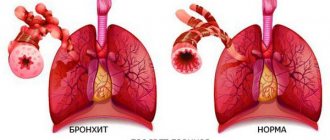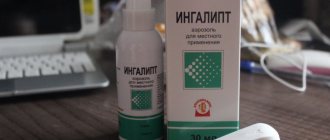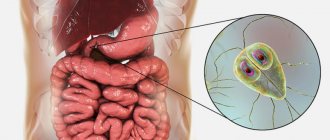Pharmacodynamics
From Orvirem®, which is a polymer compound of rimantadine with sodium alginate, the active substance is not released immediately, which causes a gradual release of rimantadine into the blood, its prolonged circulation in the body, a constant concentration of the drug in the blood, and a decrease in the toxic effect of rimantadine. Active against strains of influenza A virus. Has an antitoxic effect against ARVI and influenza caused by type B virus.
Orvirem® selectively interacts with the transmembrane viral protein M2, which functions as a proton pump. It prevents a decrease in the pH of endosomes, blocks the fusion of the virus shell with endosome membranes and thus prevents the transfer of viral genetic material into the cell cytoplasm. Inhibits the exit of viral particles from the cell, i.e. interrupts the transcription of the viral genome. Thus, it has a direct antiviral effect. Stabilizes the system of formation of sIgA (secretory immunoglobulin A), as the first level of protection, in the nasopharyngeal mucosa. Promotes the induction of interferon as a second level of protection. Orvirem® helps to normalize the subpopulation composition of immunocompetent cells and, accordingly, improves their functional activity and strengthens the cellular component of immunity. Has a detoxifying effect. Reduces the levels of pro-inflammatory cytokines IL-8 and TNF-α, reduces the antigenic load on immunocompetent cells, and quickly stops inflammatory reactions.
Directions for use and doses
Inside, after meals, with water, according to the following schemes:
Treatment regimen
| Age | Reception days | |||
| 1st | 2nd | 3rd | 4th | |
| 1–3 years | 2 teaspoons 3 times | 2 teaspoons 2 times | 2 teaspoons 2 times | 2 teaspoons 1 time |
| 3–7 years | 3 teaspoons 3 times | 3 teaspoons 2 times | 3 teaspoons 2 times | 3 teaspoons 1 time |
| 7–14 years | 4 teaspoons 3 times | 4 teaspoons 2 times | 4 teaspoons 2 times | 4 teaspoons 1 time |
Prophylactic scheme
| Age | Daily dose | Reception scheme | Admission deadline |
| 1–3 years | 2 teaspoons | 1 per day | 10–15 days |
| 3–7 years | 3 teaspoons | 1 per day | 10–15 days |
| 7–14 years | 4 teaspoons | 1 per day | 10–15 days |
1 teaspoon = 5 ml.
The maximum daily dose is 5 mg of rimantadine per 1 kg of body weight.
Efficiency
The criteria for assessing the preventive effectiveness of the tested drug was its ability to prevent disease during an outbreak of influenza or ARVI of another etiology in a team.
Preventive effectiveness was also judged by its effect on viral shedding in hospitalized children with influenza and by the frequency of development of nosocomial acute respiratory infections among them.
As a result of the studies, preventive effectiveness: excellent - 71.6%, satisfactory - 11.9%, unsatisfactory - 16.5%. Systematic administration of the drug to prevent influenza reduces the incidence of the disease by 4–5 times in organized groups.
The criteria for assessing the therapeutic effectiveness of the drug were the duration of the main clinical symptoms of the disease (temperature reaction, intoxication and catarrhal symptoms in the nasopharynx), the speed of disappearance of pathological changes in laboratory parameters, if any developed at the onset of the disease, the development or absence of complications, as well as certain adverse reactions in response to his introduction.
When treating influenza and acute respiratory viral infections, it reduces the time of manifestation of the main symptoms of the disease by 3.1–3.6 days. The duration of the temperature reaction, symptoms of intoxication, as well as catarrhal symptoms in the nasopharynx are significantly reduced. Peripheral blood counts normalize faster. Indicators of specific and nonspecific immunity improve.
In case of late treatment and relapses of the disease, the use of Orvirem® reduces the duration of the disease by 2 times and prevents the development of complications.
The drug has proven its safety:
— there were no significant changes in the dynamics of peripheral blood parameters in children of the compared groups;
— no pathological changes were detected in the urine;
— there is no increase in allergic mood in both children with high and normal levels of IgE in the blood serum, which confirms clinical data on the absence of any allergic reactions to its administration.
Compound
Active ingredients: Alpha-glutamyl-tryptophan sodium [Thymogen sodium] (in terms of alpha-glutamyl-tryptophan) 0.15 mg Ascorbic acid 12 mg Bendazole hydrochloride (dibazol) 1.25 mg Excipients: Sucrose 800.0 mg Purified water up to 1 ml
Description:
The syrup is colorless to yellow.
Pharmacotherapeutic group:
Immunostimulating agent.
ATX code: L03AX
Pharmachologic effect:
Pharmacodynamics:
the drug is a means of etiotropic and immunostimulating therapy, has an indirect antiviral effect against influenza A and B pathogens, as well as other viruses that cause acute respiratory diseases. Reduces the severity of the main clinical symptoms of influenza and ARVI, and also shortens the duration of the disease and promotes its uncomplicated course. In in vitro studies, the drug specifically suppresses (inhibits) the reproduction (replication) of the SARS-CoV-2 virus, which is the causative agent of the new coronavirus infection (COVID-19). Increases the content of secretory immunoglobulin A (slgA) in the mucous membrane of the nasopharynx - the entrance gate of infection, increasing the local immunoresistance of the body to respiratory infections of a viral and bacterial nature. With a preventive effect, the drug increases the potential metabolic activity of innate immune cells (neutrophil granulocytes and monocytes), which, in the event of infection, increases their ability to absorb and destroy bacterial and viral agents due to increased enzymatic (oxidative) activity, synthesis of cationic proteins and increased number of phagocytic cells. In this case, the initial state of metabolic activity of innate immune cells, in the absence of infectious agents, does not change, being within normal values. Bendazole induces the body's production of endogenous interferon and has an immunomodulatory effect (normalizes the body's immune response). Enzymes, the production of which is induced by interferon in the cells of various organs, inhibit viral replication. Alpha-glutamyl-tryptophan (thymogen) is a synergist for the immunomodulatory effect of bendazole, normalizing the T-cell component of immunity. Ascorbic acid activates the humoral component of the immune system, normalizes capillary permeability, thereby reducing inflammation, and exhibits antioxidant properties, neutralizing oxygen radicals that accompany the inflammatory process, and increases the body's resistance to infection.
Pharmacokinetics:
When taken orally, the drug is completely absorbed from the gastrointestinal tract. The bioavailability of bendazole is about 80%, alpha-glutamyl tryptophan is no more than 15%, ascorbic acid is up to 70%. Ascorbic acid is absorbed in the gastrointestinal tract (mainly in the jejunum). Communication with plasma proteins – 25%. TCmax after oral administration – 4 hours. Easily penetrates into leukocytes, platelets, and then into all tissues, penetrates the placenta. Gastrointestinal diseases (peptic ulcer of the stomach and duodenum, intestinal motility disorders, helminthic infestation, giardiasis), consumption of vegetable and fruit juices, and alkaline drinking reduce the binding of ascorbic acid in the intestine. Ascorbic acid is metabolized primarily in the liver into deoxyascorbic acid, then into oxaloacetic and diketogulonic acids. It is excreted by the kidneys, through the intestines, with sweat, breast milk unchanged and in the form of metabolites. The products of bendazole biotransformation in the blood are two conjugates formed as a result of methylation and carboethoxylation of the imino group of the imidazole ring of bendazole: 1-methyl-2-benzylbenzimidazole and 1-carboethoxy-2-benzylbenzimidazole. Bendazole metabolites are excreted in the urine. Alphaglutamyl-tryptophan, under the influence of petidases, is broken down into L-glutamic acid and L-tryptophan, which are used by the body in protein synthesis.
Indications for use:
Prevention and complex therapy of influenza and acute respiratory viral infections in children over one year of age.
Contraindications:
hypersensitivity to the components of the drug, diabetes mellitus, pregnancy, children under 1 year of age. If necessary, please consult your doctor before taking the drug.
Precautions for use.
Consult your doctor before taking the drug if you have hypotension.
Use during pregnancy and breastfeeding:
During pregnancy, taking the drug is not recommended due to insufficient clinical data. During breastfeeding, use is possible if the expected benefit to the mother outweighs the potential risk to the child. If you need to take the drug during breastfeeding, please consult your doctor.
Directions for use and dosage:
Orally 30 minutes before meals. For treatment:
Children aged 1 to 3 years – 2 ml 3 times a day;
children aged 3 to 6 years – 4 ml 3 times a day; children aged 6 to 10 years – 8 ml 3 times a day; children over 10 years of age – 12 ml 3 times a day. Course of application – 4 days. If after 3 days of treatment there is no improvement or the symptoms worsen or new symptoms appear, you should consult your doctor. For prevention:
- in direct contact with a patient with influenza and other acute respiratory viral infections: Children aged 1 to 3 years - 2 ml 3 times a day; children aged 3 to 6 years – 4 ml 3 times a day; children aged 6 to 10 years – 8 ml 3 times a day; children over 10 years of age – 12 ml 3 times a day. Course of application – 4 days. Preventive courses, if necessary, are repeated after 3 weeks (until the epidemic situation normalizes).
Side effect:
a short-term decrease in blood pressure is possible. Possible allergic reactions: urticaria. In these cases, the use of the drug is stopped and symptomatic treatment and antihistamines are prescribed. Consult your doctor if you experience any of the side effects mentioned or other side effects not listed in the instructions. If the side effects listed in the instructions get worse, tell your doctor.
Overdose:
Cases of overdose have not been described.
Interaction with other drugs:
No interaction of alpha-glutamyl-tryptophan with drugs has been identified. Bendazole prevents the increase in total peripheral vascular resistance caused by the use of non-selective beta-blockers. Strengthens the hypotensive (lowering blood pressure) effect of antihypertensive and diuretic drugs. Phentolamine enhances the hypotensive effect of bendazole. Ascorbic acid increases the concentration in the blood of antibacterial drugs of the tetracycline series and benzylpenicillin. Improves the absorption of iron (Fe) preparations in the intestine. Reduces the effectiveness of heparin and indirect anticoagulants. Acetylsalicylic acid (ASA), oral contraceptives, fresh juices and alkaline drinks reduce its absorption and absorption. When used simultaneously with ASA, the urinary excretion of ascorbic acid increases and the excretion of ASA decreases. ASA reduces the absorption of ascorbic acid by approximately 30%. Ascorbic acid increases the risk of developing crystalluria when using drugs containing acetylsalicylic acid (ASA) and short-acting sulfonamides, slows down the excretion of acids by the kidneys, increases the excretion of drugs with an alkaline reaction (including alkaloids), and reduces the concentration in the blood of oral contraceptives. When used simultaneously, it reduces the chronotropic effect of isoprenaline. Reduces the therapeutic effect of antipsychotic drugs (neuroleptics) - phenothiazine derivatives, tubular reabsorption of amphetamine and tricyclic antidepressants. Barbiturates and primidone increase the excretion of ascorbic acid in the urine. Possible simultaneous use with antiviral drugs and symptomatic treatment of influenza and ARVI. Consult your doctor if you are taking the medications listed in this section or other medications.
Special instructions:
After a repeated course, monitoring of blood glucose concentrations is recommended.
Impact on the ability to drive vehicles and machinery:
the drug does not affect the ability to drive vehicles, operate moving machinery, or engage in other potentially hazardous activities that require increased concentration and speed of psychomotor reactions.
Release form:
Syrup [for children]. 50 ml in a dark glass bottle. The bottle is sealed with a plastic cap with tamper evident or a plastic cap with tamper evident and childproof. One bottle is placed in a cardboard pack. Instructions for use are placed in a pack or in the form of a folded sheet placed under the opening part of the label. A dosing device is placed in the pack: a measuring cup or a dosing spoon, or a dosing pipette.
Storage conditions:
Store at a temperature not exceeding 25 Сo. Keep out of the reach of children.
Best before date:
2 years. Do not use after the expiration date stated on the packaging.
Vacation conditions:
available without a prescription.
Manufacturer / legal entity in whose name the registration certificate was issued / organization receiving complaints regarding the quality of the drug: Joint Stock Company Medical-Biological Research and Production Complex Cytomed (JSC MBNPK Cytomed). Address: Russia, 194356, St. Petersburg, Orlovo-Denisovsky prospect, building 14, building 1, tel., cytomed.ru Production site address: Russia, St. Petersburg, Orlovo-Denisovsky prospect, building 14, building 1.
General Director A.N. Khromov JSC Medical-Biological Research and Production Complex Cytomed




